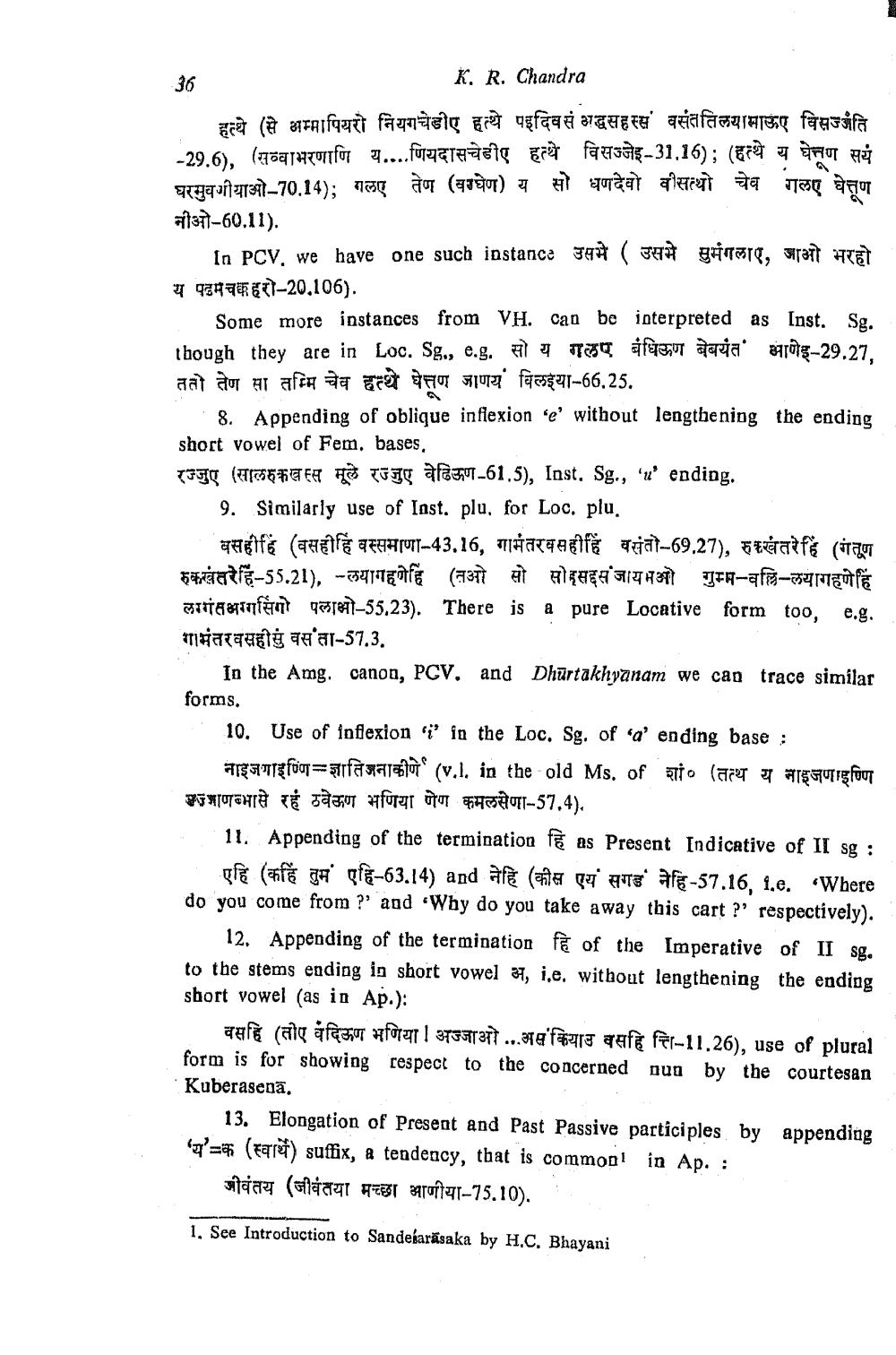________________
मीन
K. R. Chandra हत्थे (से अम्मापियरो नियगचेडीए हत्थे पइदिवसं गद्धसहस्स वसंततिलयामाऊए विसज्जति -29.6), (सव्वाभरणाणि य....णियदासचेडीए हत्थे विसज्जेइ-31.16); (हत्थे य घेत्तण सयं घरमुवगीयाओ-70.14); गलए तेण (वग्घेण) य सो धणदेवो वीसत्थो चेव गलए घेत्तण नीओ-60.11).
In PCV. we have one such instance उसमे ( उसमे सुमंगलाए, आओ भरहो य पढमचक हरो-20.106).
Some more instances from VH. can be interpreted as Inst. Sg. though they are in Loc. Sg., e.g. सो य गलए बंधिऊण बेबयंत आणेइ-29.27. ततो तेण सा तम्मि चेव हत्थे घेत्तण जाणयं विलइया-66.25.
8. Appending of oblique inflexion •e' without lengthening the ending short vowel of Fem. bases, रज्जुए (सालरुकखस्स मूले रज्जुए वेढिऊण-61.5), Inst. Sg., 'x' ending.
9. Similarly use of Inst. plu. for Loc. plu.
वसहीहिं (वसहीहि वस्समाणा-43.16, गामंतरवस हीहि वसंतो-69.27), रुकखतरेहि (गंतूण रुकखतरेहि-55.21), - लयागहणेहिं (तओ सो सोहसहसजाय भओ गुम्म-वलि-लयागहणेहि लग्गंसमग्गसिंगो पलाओ-55,23). There is a pure Locative form too, e.g. गामंतरवसहीसु वसता-57.3.
In the Amg. canon, PCV. and Dhūrtakhyanam we can trace similar forms.
10. Use of inflexion i' in the Loc. Sg. of 'a' ending base :
नाइजगाइणि=ज्ञातिजनाकीणे (v.1. in the old Ms. of शां० (तत्थ य नाइजणाइण्णि माणब्भासे रह ठवेऊण भणिया णेण कमलसेणा-57.4).
11. Appending of the termination fee as Present Indicative of II sg :
एहि (कहिं तुम एहि-63.14) and नेहि (कीस एयं सगड नेहि-57.16, i.e. Where do you come from ?' and 'Why do you take away this cart?' respectively).
12. Appending of the termination fè of the Imperative of II sg. to the stems ending in short vowel 37, i.e. without lengthening the ending short vowel (as in Ap.):
वसहि (तोए वदिऊण भणिया! अज्जाओ ...असं कियाउ वसहि त्ति-11.26), use of plural form is for showing respect to the concerned nun by the courtesan Kuberasena.
13. Elongation of Present and Past Passive participles by appending 'यक (स्वार्थे) suffix, a tendency, that is commont in Ap. :
जीवंतय (जीवंतया मच्छा आणीया-75.10).
1. See Introduction to Sandesarăsaka by H.C. Bhayani




